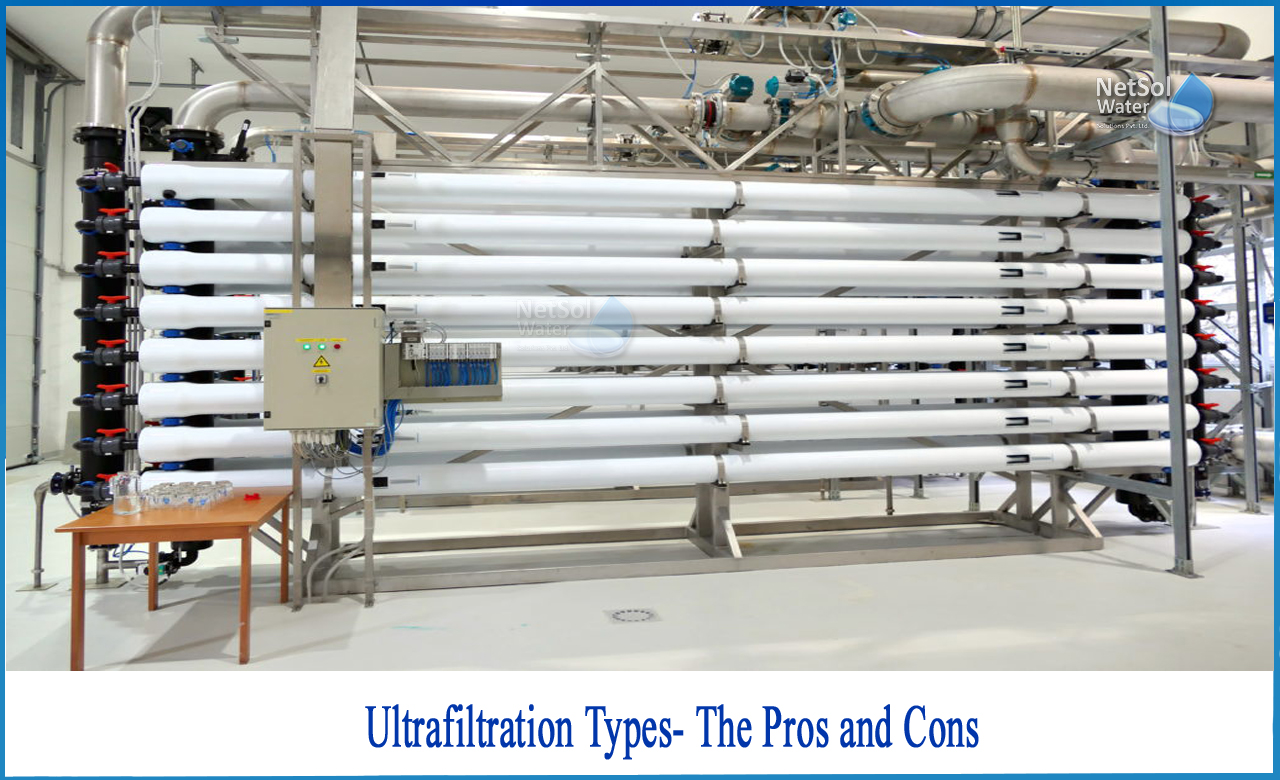What are the pros and cons of Ultrafiltration?
Based on the application and source water quality, ultrafiltration systems can be developed and configured in a variety of ways. Membranes come in a variety of materials, forms, flow types, and combinations. Each ultrafiltration technology configuration has attributes that indicates which is the best match for a particular application or source water quality. The optimal fit of a layout would be determined by parameters such as suspended solids concentration, oil/grease, colour, and energy usage.
Here, we'll look at and analyse the advantages and disadvantages of two ultrafiltration technology configurations:
Submerged filtration vs. pressure vessel filtration, and dead-end filtration vs. cross-flow filtration
A: Cross flow vs. dead-end
Dead-end flow
The feed water flows perpendicular to the membrane surface in a dead-end flow ultrafiltration technology arrangement. Molecules and particles smaller than the effective pore size flow through to the other side, whereas bigger stuff accumulates on the membrane surface as a cake layer.
What are the pros?
-Low energy consumption:The whole amount of energy supplied into the flow is used to force water through the membrane.
-There will be no recirculation:There are no surplus solids conveyed through the system, and particles accumulate on the membrane, eliminating the requirement for recirculation.
-A smaller carbon footprint:Because there is no recirculation, no additional pipes, pumps, or valves are required, and no more energy is expended on this operation.
What are the cons?
-Backwashing more frequently:The constant accumulation on the membrane necessitates more frequent cleaning, which might result in increased operational expenses.
-Membrane flux decreases:The flux across the membrane diminishes as the layer of cake on the membrane thickens, as the flow is impeded by these particles.
Cross flow
The feed water flow is parallel to the membrane surface in a cross flow ultrafiltration technology filtration arrangement. Water and microscopic particles pass through the membrane as it flows down its length, but certain solids cling to the membrane's surface. As a result, the remainder of these solids proceed to the vessel's conclusion. In water sources with high total suspended particles levels, the shear force generated by the tangential water flow also scours the membrane and aids in maintaining a cleaner membrane.
Pros
-Forces of shear:The shear force created by the tangential flow scours the membrane surface and removes the surplus solid layer.
-A faster rate of liquid removal:The system flux is often considerably more constant since the solids cake layer is kept thin.
-Increased membrane longevity:The thin cake layer and regular cleaning provided by the cross flow motion keep the membrane in excellent working order for extended periods of time, lowering chemical cleaning expenses.
Cons
-Recirculation is required:Recirculation is required to prevent excessive water loss since all of the water is not pulled through the membrane at the same time.
-Higher levels of energy:This feature necessitates greater energy due to the combination of trans membrane pressure and the force required to move the fluid along the membrane and recycle it.
Pressure vessel vs. submerged
Submerged
This setup, also known as an immersed setup, contains a big tank that is exposed to the atmosphere. The membranes are lowered into the feed water tank in a number of steps. The water is forced into the membrane system by vacuum pressure and up to an exit pipe linked to the remainder of the membranes.
Pros
-Visual examination:Because the tank's surface is exposed to the environment, operators can see the membranes in action and spot any problems with their eyes.
-Operation at lower pressure:The water is filtered using a lower differential pressure.
Cons
-At higher heights, the operation is affected:The lower the atmospheric pressure is, the higher the system is above sea level, lowering the differential pressure.
-At cooler feed water temperatures, the operation is affected:The viscosity of the water increases as the temperature of the supply water lowers, forcing the pumps to work harder to compensate.
-Longer downtime for membrane replacement:When changing membranes, the entire frame structure to which they are attached must be pulled from the tank, and the system cannot be utilised until the maintenance is completed.
Pressure vessel
The membranes are individually contained within cylindrical tubes composed of materials such as PVC, PE, or PVDF in this ultrafiltration technology setup. Several of them are put on skids and linked in a parallel manner. Water is drawn across the membrane by a pressure pump. These flow patterns can filter from the inside out or from the outside in.
Pros
-A wide variety of operating pressures is available:Pressure vessels can handle disturbances like transient changes in feed water quality since they are not dependant on atmospheric pressure.
-Increased flux:It can treat a larger amount of water in a day since it can run at a greater flux.
-Cleaning that is safer and more dependable:Cleaning chemical vapours do not permeate into the surrounding air since they are contained in a container.
-Externally contaminant-resistant:Outside forces cannot contaminate the feed water, back wash water, or membrane because of the closed design.
Cons
Housing expenses are rising:While a submerged system, for example, just needs one big tank, pressure vessel systems can be more expensive owing to the number of separate membrane housing units required.
Netsol Water is Greater Noida-based leading water & wastewater treatment plant manufacturer. We are industry's most demanding company based on client review and work quality. We are known as best commercial RO plant manufacturers, industrial RO plant manufacturer, sewage treatment plant manufacturer, Water Softener Plant Manufacturers and effluent treatment plant manufacturers. Apart from this 24x7 customer support is our USP. Call on +91-9650608473, or write us at enquiry@netsolwater.com for any support, inquiry or product-purchase related query.



